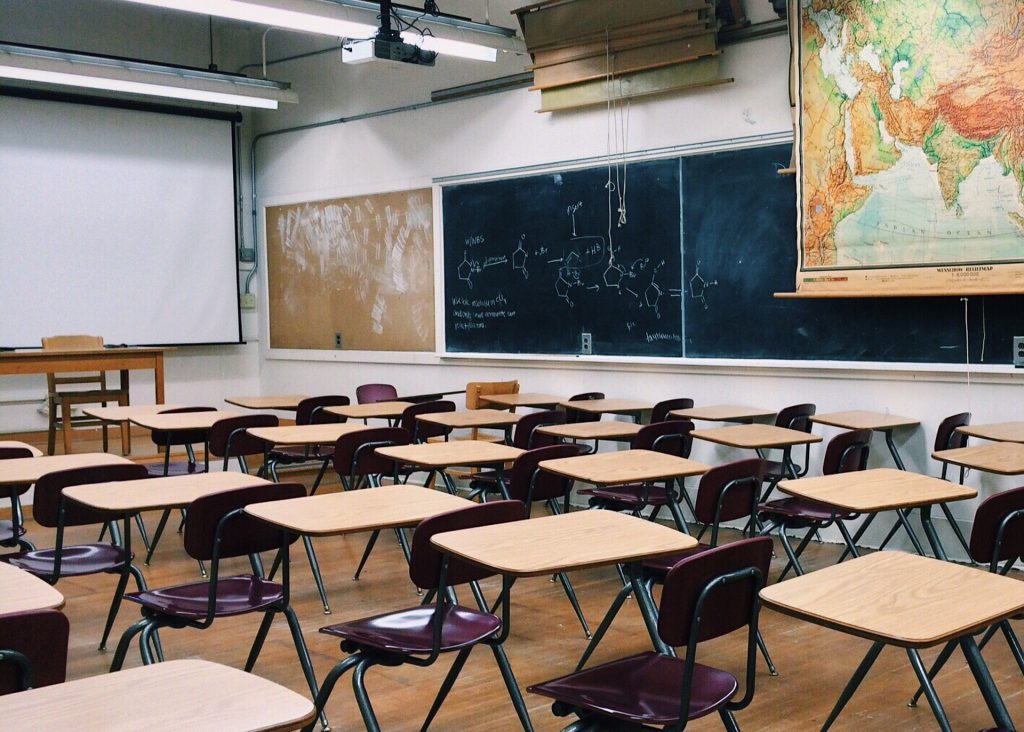What Is State Doing About School Security?
$96.2 million for security upgrades and training. Has that addressed the problem?
Police officers shot two high school students charged with stabbing or threatening the officers and students. Wisconsin schools close daily as a precaution after threats of violence. Parents ask, “How safe is my kid’s school?”
Time for an update: What has been done over the last two years – since $100 million was approved by lawmakers and signed into law by then-Gov. Scott Walker – to make Wisconsin schools safer?
According to the State Department of Justice (DOJ):
*$63.4 million has been paid for training sessions and security upgrades to private and public schools, and another $32.8 million has been tentatively approved. State records say Milwaukee Public Schools got $5.89 million; Racine schools, $1.63 million; Waukesha schools, $1.24 million; Wauwatosa schools, $800,315, and West Allis/West Milwaukee schools, $744,471.
*3,359 educators, administrators, and law officers were trained in adolescent mental health.
*School Safety Intervention Teams have been created and trained, using DOJ and U.S. Secret Service guidelines.
Still, every day brings school-safety incidents that “remind us that we do not possess the capability to completely prevent someone from bringing a weapon to school,” U.S. Sen. Ron Johnson said after officers shot students with weapons at Waukesha and Oshkosh high schools.
“I feel really sorry for our kids that they have to go to school in this environment,” said Democratic Atty. Gen. Josh Kaul, who has two young children.
Kaul’s Department of Justice oversees the $100-million grant program that became law in 2018, though the grants were largely awarded under his predecessor, Republican Brad Schimel.
Officials who work with teachers and local school board members and administrators said the $96.2 million spent so far made it harder for someone bent on violence to enter schools.
“School safety grants were based on a model that presupposes a student or other intruder would try to shoot his or her way into a building,” said Dan Rossmiller, director of government relations for the Wisconsin Association of School Boards (WASB). “What we’re seeing lately is a rash of threats that originate within the walls of a school building, which is a different sort of problem and may require our thinking to evolve.”
Christina Brey, public affairs director for the largest statewide teachers union, Wisconsin Education Association Council, called the $96.2 million “a start – but the hardest work is yet to come.”
Rossmiller was more blunt: “Schools are struggling with student mental health issues.”
WASB members list these needs: Help evaluating students in custody who are a danger to themselves or others; more child psychologists, school psychologists and school social workers, and help – especially in rural areas – for students who are expelled.
Milwaukee and Madison districts “have alternative schools and programs for expelled students, while most rural schools have few or no options and the few options that may exist are often located great distances from where the students are,” Rossmiller said.
Teachers and administrators also need more help with “employing trauma-informed practices in school, and more help with employing character education and socio-emotional learning,” he added.
Brey said the $96.2 million in grants should have been administered by the state Department of Public Instruction (DPI), instead of the Justice Department. DPI “knows schools best.”
She added, ”Bring educators back to the table and listen to what they have to say. They are the professionals who deal head-on, every day, with the trauma many students bring to school.”
Shootings in Waukesha and Oshkosh brought new Capitol promises to address the mental health needs of Wisconsin’s students.
For example, Assembly Majority Leader Jim Steineke said: “The issue of mental health is one that I think both sides of the aisle can come together on. I look forward to advancing this effort in a bipartisan way so we can help the one in five kids who experience mental illnesses.”
Brey said, “The environment inside schools is entirely different than when prior generations attended school. Students are looking to us to stand with them and provide the type of environment where learning happens.”
There were three Rs — “readin’, ‘riting and ‘rithmetic” –- in the 1950s.
Today, students learn to Run-Hide-Fight.
Steven Walters is a senior producer for the nonprofit public affairs channel WisconsinEye. Contact him at stevenscotwalters@gmail.com
If you think stories like this are important, become a member of Urban Milwaukee and help support real, independent journalism. Plus you get some cool added benefits.
The State of Politics
-
RNC Brings Fame to Gen Z Party Leader
 Jul 15th, 2024 by Steven Walters
Jul 15th, 2024 by Steven Walters
-
Wisconsin’s Republican Roots Run Deep
 Jul 8th, 2024 by Steven Walters
Jul 8th, 2024 by Steven Walters
-
Feuding Supreme Court Justices Need a Break
 Jul 1st, 2024 by Steven Walters
Jul 1st, 2024 by Steven Walters






















“Brey said the $96.2 million in grants should have been administered by the state Department of Public Instruction (DPI), instead of the Justice Department. DPI “knows schools best.” ‘
Absolutely true. However, given that this was a totally political decision, Walker put the money in the hands of his crony Schimel instead of Democrat Tony Evers who was head of the DPI.
How do you stop bullets?